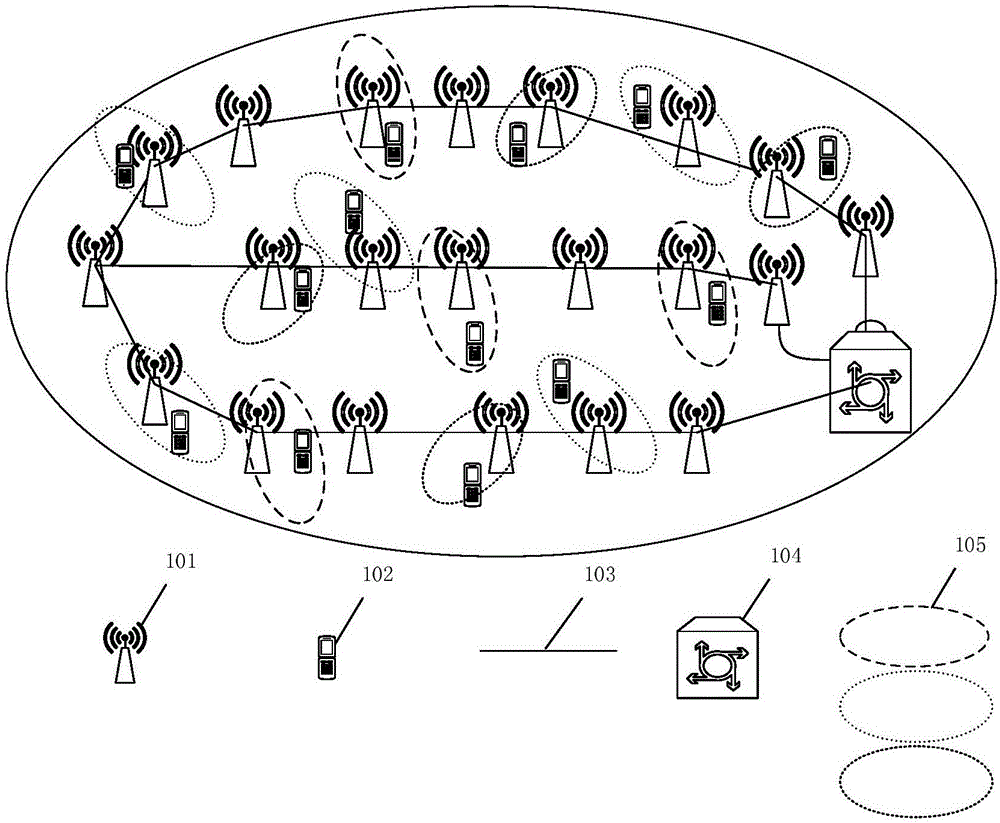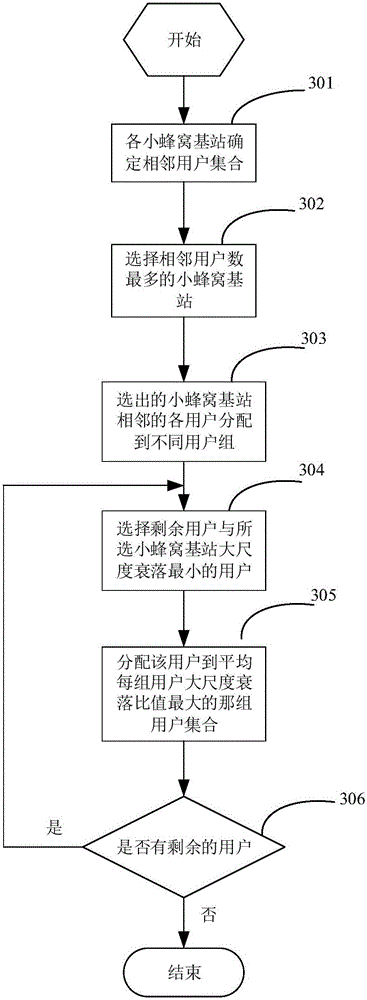Intensive small cellular network user grouping and self-adaptive interference suppression method
A network user and interference suppression technology, applied in network planning, multiplexing communication, orthogonal multiplexing systems, etc., can solve the problem of no dense small cell network, co-channel interference, and channel information overhead that the actual system cannot bear. And other issues
- Summary
- Abstract
- Description
- Claims
- Application Information
AI Technical Summary
Problems solved by technology
Method used
Image
Examples
Embodiment Construction
[0049] The present invention will be further described below in conjunction with the accompanying drawings and specific embodiments.
[0050] The present invention will be further described below in conjunction with the accompanying drawings and specific embodiments.
[0051] In order to make the object, technical solution and advantages of the present invention clearer, the present invention will be described in detail below with reference to the accompanying drawings and specific embodiments.
[0052] The dense small cell network system model of this embodiment is as follows figure 1 As shown, considering the time division duplex (TDD) transmission mode, assuming that a cell has N small cells, each small cell is equipped with a small cell base station equipped with M antennas, and is connected to the central processing unit through a limited-capacity backhaul link . The number of users served by the same frequency band in the entire cell is K, and each user is configured w...
PUM
 Login to View More
Login to View More Abstract
Description
Claims
Application Information
 Login to View More
Login to View More - R&D
- Intellectual Property
- Life Sciences
- Materials
- Tech Scout
- Unparalleled Data Quality
- Higher Quality Content
- 60% Fewer Hallucinations
Browse by: Latest US Patents, China's latest patents, Technical Efficacy Thesaurus, Application Domain, Technology Topic, Popular Technical Reports.
© 2025 PatSnap. All rights reserved.Legal|Privacy policy|Modern Slavery Act Transparency Statement|Sitemap|About US| Contact US: help@patsnap.com



